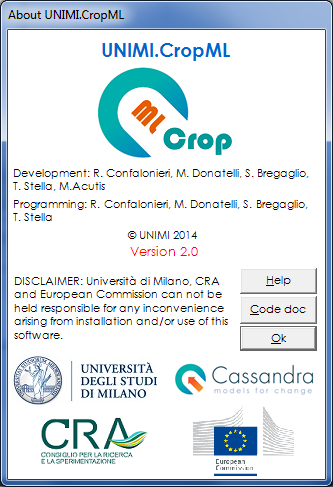 |
2019 - Ecological Modelling, 401, 111-128 |
 |
Movedi, E., Bellocchi, G., Argenti, G., Paleari, L., Vesely, F.M., Staglianò, N., Dibari, C., Confalonieri, R. |
Plant diversity supports the high aptitude of grassland covers to provide fodder production for animal feeding and contribute to the storage of carbon, while also granting pollination and aesthetics of landscapes. This ability depends on the management intensity of the grassland system, physical constraints and climatic characteristics. Most of current grassland models simulating the impact of weather conditions, soil fertility and the intensity of use of grassland systems (by grazing and/or mowing) on fodder production and carbon-nitrogen fluxes inherit eco-physiological and biophysical details from crop models without considering explicitly temporal changes in taxonomic and functional composition. The dynamic grassland model CoSMo (COmmunity Simulation MOdel) includes a set of rules to simulate explicitly seasonal changes in species composition of managed grasslands under various soil, climate and management drivers, and it is consistent with the degree of complexity of the most generic crop simulators. The incorporation of CoSMo functionalities into the standalone crop simulators CropSyst and WOFOST is proposed as a way to: (i) reduce the uncertainty in estimations of harvested aboveground biomass (AGB) and (ii) simulate dynamically the relative abundance of species (for respectively the whole community and individual species). Considering three mixtures of grassland species (with increasing complexity from Mix 1 to Mix 3) in a mown hay meadow in central Italy (Massa Marittima, 43° 03′ N, 10° 53′ E, 380m a.s.l.), we show that CoSMo overall improved the model ability to reproduce observed AGB in Mix 1 and 2 (e.g. with CropSyst in Mix 2 relative root mean square error [RRMSE] lowered from 35.01 to 25.27%) while the model performance for Mix 3 appeared as not unambiguously linked to considering plant diversity. An assessment of the relative abundance estimates for the whole community indicates 30%
 |
Keywords: CoSMo, forage production, grass-legume mixtures, grassland modelling, plant diversity, relative abundance |
 |
DOI: 10.1016/j.ecolmodel.2019.03.001 |













